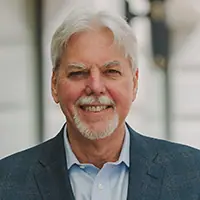
How One Bank CEO is Navigating the Covid-19 Pandemic
Like most of his peers throughout the banking industry, Dennis Shaffer, the CEO at Sandusky, Ohio-based Civista Bancshares, is confronting challenges unlike anything he has faced in his long career.
The Covid-19 pandemic is ravaging the U.S. economy, leading to the highest levels of unemployment since the Great Depression and a likely recession of unknown depth and duration. That is forcing CEOs like Shaffer to make decisions about sustainability and workforce deployment that were unimaginable six months ago.
The $2.5 billion bank serves a three-state area that spans big chunks of Ohio as well as southeastern Indiana and northern Kentucky. Civista’s profitability has already been impacted by the pandemic: Net income in the first quarter was down nearly 18%, to $7.8 million year over year.
But Shaffer says the bank’s mortgage loan originations are at record levels and several construction projects that it financed prior to the pandemic are still going forward. The bank processed 2,141 loans under the SBA’s Paycheck Protection Program, totaling $262 million. Shaffer estimates that over 300 of those loans were to new and very grateful customers that could lead to expanded business relationships in the future.
Civista has also reached out to borrowers that have been hard hit by the downturn and offered them 90-day loan modifications. In the first quarter, the bank modified 66 loans totaling $39.9 million, according to its first quarter earnings report. These were primarily deferral of principal and/or interest payments. Since March 31, it has received requests to modify an additional 727 loans totaling $410 million.
“The bank’s doing fine,” he says. “Our main emphasis has been keeping our customers and employees healthy and also continue to do business as normal as possible for our customers.”
The biggest challenge that Shaffer and other bank CEOs face today is economic uncertainty. If he knew how deep and long the recession will be, Shaffer could better estimate the impact that will have on Civista’s balance sheet.
“This is my 35th year in banking and I’ve never seen anything like this,” he says. “We’ve gone through recessions where a business goes from making $1 to maybe 70 cents. Well here, they’ve gone from $1 to some of these businesses making nothing.”
Shaffer faced up to that challenge by taking a hard look at the bank’s capital structure and factoring in nightmarish projections.
He started with evaluating whether Civista had enough capital to sustain losses that could be at “historical levels.” During the last recession, the bank sustained $54 million in losses over a four-year period. In his analysis, Shaffer decided to double that – and compress four years to two. He also assumed the bank would continue paying its dividend and wouldn’t lay off employees.
After they factored in all those assumptions, “we were still above 8% on a Tier 1 [capital] basis, so we feel pretty good about that,” he says. The mandated regulatory minimum is 6%, which would give the bank the capacity to absorb even more losses, although Shaffer hopes to avoid falling that low. That analysis gave Shaffer confidence that Civista could take a hard punch in the recession and still carry on. It also answered the question of whether the bank need to raise additional capital.
“We felt we didn’t need to,” he says. “We think we’re really strongly capitalized. I think our stress testing has proved that.”
Shaffer believes the loan modifications and Paycheck Protection loans have bought many of Civista’s customers valuable time, but he won’t know yet for a couple of months how many of those businesses will sustain themselves through the pandemic. “Sales [won’t be] 100%, but are they going to be 90% or are they going to be 50%?” he says.
Another challenge Shaffer has encountered is running the bank with a distributed workforce. Seventy percent of Civista’s employees are working from home, most of them since early March. (Shaffer comes to the office every day because he feels he needs to be visible to the employees working there.) While he had some apprehensions at first, he’s pleased with the bank’s productivity.
Still, Shaffer has to decide when to bring most of those people back into the office. Ohio has already begun to reopen its economy, but he intends to normalize the bank’s operations more gradually. Civista’s branch lobbies have been closed since March u00ad- just the drive-through lanes are readily accessible – and Shaffer plans to maintain the status quo through May and perhaps extend it through June.
He also doesn’t see an immediate need to repatriate the majority of Civista’s office employees. “We’ll phase that in and probably do that gradually,” Shaffer says. As other businesses with more pressing needs bring their people back, the bank can afford to wait.
“I just think it benefits the greater community because it eliminates more people coming back into the workforce,” he says. “We can do our part there.”



